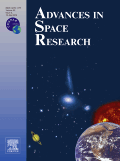
ADVANCES IN SPACE RESEARCH
Scope & Guideline
Shaping the Future of Space Research.
Introduction
Aims and Scopes
- Space Weather and Ionospheric Studies:
Research on the effects of solar activity on the Earth's atmosphere, particularly the ionosphere, including studies on total electron content (TEC), ionospheric disturbances, and geomagnetic storms. - Satellite Technology and Navigation:
Innovations in satellite systems, including GNSS (Global Navigation Satellite Systems), precise point positioning, and developments in satellite design, operation, and applications for navigation and remote sensing. - Planetary Exploration and Resources Utilization:
Exploratory studies on planetary bodies, including Mars and the Moon, focusing on in-situ resource utilization, landing strategies, and the development of technologies for future exploration missions. - Space Debris and Collision Avoidance:
Research on the tracking, modeling, and mitigation of space debris, including strategies for active debris removal and collision avoidance in satellite constellations. - Astrophysics and Cosmic Phenomena:
Studies related to cosmic rays, solar flares, and their implications for space weather, as well as observations and modeling of astrophysical phenomena. - Advanced Control Systems for Spacecraft:
Development of control strategies for spacecraft, including attitude control, formation flying, and autonomous navigation systems, often utilizing machine learning techniques. - Remote Sensing and Environmental Monitoring:
Utilization of satellite data for environmental monitoring, including studies on land use change, climate monitoring, and the impact of human activities on ecosystems.
Trending and Emerging
- Machine Learning and AI Applications:
The integration of machine learning and artificial intelligence in various aspects of space research, including satellite data analysis, predictive modeling, and autonomous spacecraft operations is gaining traction. - Sustainable Space Practices and Policies:
Research addressing sustainability in space exploration, including the management of space debris, environmental impacts, and the development of policies for responsible space activities is increasingly prominent. - Interplanetary Missions and Technologies:
There is a growing focus on interplanetary exploration missions, particularly those targeting Mars and lunar environments, emphasizing new technologies for landing, resource utilization, and scientific investigation. - High-Resolution Remote Sensing:
The demand for high-resolution remote sensing data and advanced analysis techniques is on the rise, particularly in the context of climate monitoring and environmental assessment. - Collaborative Satellite Systems:
Research on collaborative and distributed satellite systems, including the use of constellations for improved global coverage and data collection, is emerging as a key area of interest.
Declining or Waning
- Traditional Astronomical Observations:
Research centered on traditional observational techniques for celestial phenomena has waned in favor of more advanced methodologies and technologies, such as machine learning and automated systems. - Basic Space Physics Studies:
While foundational studies in space physics remain important, there has been a noticeable shift towards applied research that integrates technology and practical applications in space exploration. - Historical and Theoretical Studies of Space Missions:
Papers focusing solely on historical analysis or theoretical frameworks of past missions are becoming less frequent, as the focus shifts toward current and future missions with practical implications.
Similar Journals
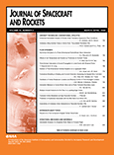
JOURNAL OF SPACECRAFT AND ROCKETS
Propelling Innovation in Aerospace Research.The Journal of Spacecraft and Rockets, published by the American Institute of Aeronautics and Astronautics, serves as a premier platform for disseminating cutting-edge research in the fields of aerospace engineering and space science. Established in 1964, this esteemed journal has evolved over nearly six decades, solidifying its reputation with a consistent publication history through 2024. With an impact factor positioning it within the Q2 quartile in both Aerospace Engineering and Space and Planetary Science categories, it ranks as a vital resource, featuring high-quality manuscripts that address the latest advancements and findings in spacecraft design, propulsion systems, and austere planetary exploration. The journal's rigorous peer-review process ensures that articles meet the high academic standards expected by practitioners in the aerospace sector. Researchers, engineers, and students alike will find the Journal of Spacecraft and Rockets to be an invaluable resource for both foundational knowledge and innovative research developments, advancing the future of aeronautics and astronautics.

GEOMAGNETISM AND AERONOMY
Charting New Frontiers in Planetary ScienceGEOMAGNETISM AND AERONOMY, published by MAIK NAUKA/INTERPERIODICA/SPRINGER, is a prominent journal dedicated to advancing the fields of geophysics and planetary science. With ISSN 0016-7932 and E-ISSN 1555-645X, this journal serves as a critical platform for researchers to disseminate their findings on geomagnetic phenomena and aeronomical studies, fostering a deeper understanding of Earth's magnetic field dynamics and atmospheric interactions. Spanning publishing years from 1996 to 2024, it is categorized in the Q3 quartile for geophysics and Q4 for space and planetary science, reflecting its positioning within the academic landscape. Although not open access, readers and researchers can access valuable insights into geomagnetic and atmospheric research, contributing to ongoing discourse in these vital scientific domains. With a focus on innovative research, GEOMAGNETISM AND AERONOMY remains an essential resource for professionals and students aiming to deepen their expertise in Earth and planetary sciences.

Journal of Space Safety Engineering
Innovating safety protocols for the future of aerospace.The Journal of Space Safety Engineering, published by ELSEVIER, is a pioneering platform dedicated to advancing the field of aerospace safety and engineering. Since its inception in 2014, this journal has catered to researchers and professionals focusing on the crucial intersection of aerospace engineering and safety, risk, reliability, and quality management. With an ISSN of 2468-8975 and E-ISSN of 2468-8967, it has established itself within the academic community, currently holding a Q3 ranking in both Aerospace Engineering and Safety, Risk, Reliability, and Quality categories, according to the 2023 metrics. The journal, which covers converged years up to 2024, is instrumental for those seeking to explore innovative safety solutions in space missions and exploration, making it an essential resource for students, industry professionals, and researchers alike. Although it is not open access, it remains a credible source of impactful studies that contribute to enhancing safety protocols and engineering practices in aerospace endeavors. With a strong focus on rigorously vetted research, the Journal of Space Safety Engineering ensures that important advancements in this dynamic and vital field are shared widely among experts and stakeholders.

Space: Science & Technology
Unlocking the Universe: Knowledge at Your FingertipsSpace: Science & Technology is a premier, open-access journal published by the American Association for the Advancement of Science, dedicated to advancing knowledge in the rapidly evolving fields of aerospace engineering and space sciences. Since its inception in 2021, the journal has rapidly established itself as a vital resource, achieving an impressive Q1 ranking in Aerospace Engineering and Q2 ranking in Space and Planetary Science as of 2023. With a Scopus rank placing it 45th out of 153 in Aerospace Engineering and 47th out of 104 in Space and Planetary Science, it serves as a critical platform for researchers, engineers, and students alike to disseminate their findings and engage with the latest developments in their field. The journal encourages innovative research articles, technical notes, and reviews that push the boundaries of what's possible in space exploration and technology. With its commitment to open access since 2021, Space: Science & Technology ensures that pioneering research is readily available to a global audience, promoting collaboration and knowledge sharing in an increasingly interconnected scientific community.

JOURNAL OF THE ASTRONAUTICAL SCIENCES
Elevating Aerospace Research to New HeightsJOURNAL OF THE ASTRONAUTICAL SCIENCES, published by Springer Heidelberg, serves as a leading platform dedicated to advancing the fields of aerospace engineering and planetary science. With an ISSN of 0021-9142 and an E-ISSN of 2195-0571, this journal has established a significant presence within the academic community, evidenced by its categorization in the Q2 and Q3 quartiles for 2023, positioning it among the top publications in its field. The journal encompasses a spectrum of research that spans from innovative aerospace technologies to the exploration of planetary systems, reflecting its rich scope developed since its inception in 1969. Although not Open Access, it provides vital contributions to ongoing discussions in aerospace research, appealing to researchers, professionals, and students eager to deepen their understanding of astronautics. With a notable impact factor and rankings in Scopus—66th in Aerospace Engineering and 64th in Space and Planetary Science—this journal continues to be a pivotal resource for those engaged in the exploration and utilization of space.
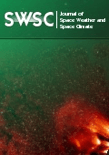
Journal of Space Weather and Space Climate
Empowering Research: Open Access to Cutting-Edge Space ScienceThe Journal of Space Weather and Space Climate is a premier, internationally recognized open-access journal published by EDP Sciences S A, dedicated to advancing the understanding of the intricate interactions between solar and geophysical phenomena. With an ISSN of 2115-7251, this journal has been at the forefront of research since 2011, fostering discussions and disseminating findings related to atmospheric and planetary sciences. The journal ranks in the top quartile for both Atmospheric Science and Space and Planetary Science, highlighting its critical role in the academia with Scopus rankings placing it at #24 out of 104 in Space and Planetary Science and #35 out of 148 in Atmospheric Science. Based in France, it offers seamless access to cutting-edge research, motivating researchers, professionals, and students to contribute to the growing knowledge in this vital field. The journal's commitment to open access ensures that impactful research reaches an extensive audience, promoting collaborative efforts to tackle issues related to space weather and climate change.
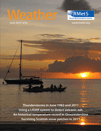
Weather
Charting New Paths in Climate ResearchWeather is a prestigious academic journal published by WILEY, specializing in the field of Atmospheric Science. Since its inception in 1946, the journal has emerged as a key resource for researchers, professionals, and students seeking to deepen their understanding of meteorological phenomena and climate dynamics. Weather is recognized for its robust impact within the scientific community, boasting a 2023 Scopus ranking of 96 out of 148 in the Earth and Planetary Sciences category, placing it comfortably within the Q2 category. Although it does not offer open access options, the journal is committed to publishing high-quality, peer-reviewed articles that advance the knowledge base of atmospheric sciences up to 2024. Through its diverse range of research, reviews, and case studies, Weather continues to play a vital role in facilitating discussions and discoveries in this essential field of study.

SPACE SCIENCE REVIEWS
Elevating Space Science Discourse GloballySPACE SCIENCE REVIEWS, published by Springer, is a premier interdisciplinary journal that has been at the forefront of space science research since its inception in 1962. With an impressive impact factor and a distinguished Q1 ranking in both Astronomy and Astrophysics, as well as Space and Planetary Science, it stands as a leading platform for the dissemination of cutting-edge research. The journal encompasses comprehensive reviews covering a diverse array of topics, from cosmic phenomena to planetary exploration, serving as a critical resource for researchers, professionals, and students alike. Although it operates primarily under a subscription model, its commitment to excellence and rigorous peer-review process ensures that each article meets the highest standards of scientific integrity. With its headquarters in the Netherlands, SPACE SCIENCE REVIEWS is positioned strategically to foster global collaboration in the field, making it an invaluable asset for anyone interested in the ever-evolving landscape of space science.
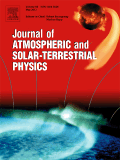
JOURNAL OF ATMOSPHERIC AND SOLAR-TERRESTRIAL PHYSICS
Exploring the Dynamics of Our Atmosphere and BeyondJournal of Atmospheric and Solar-Terrestrial Physics, published by Pergamon-Elsevier Science Ltd, stands as a pivotal academic resource in the realms of Atmospheric Science, Geophysics, and Space and Planetary Science. With an ISSN of 1364-6826 and an E-ISSN of 1879-1824, this journal encompasses a robust collection of research findings and reviews that address the intricacies of atmospheric processes and solar-terrestrial interactions. The journal has shown consistent academic performance, earning commendable rankings in 2023, including Q3 in Atmospheric Science and Q2 in Geophysics, reflecting its importance for scholarly communication and advancement in these fields. Spanning an impressive convergence of research from 1997 to 2024, it aims to foster interdisciplinary collaboration and inspire innovations among researchers, professionals, and students. Although it currently does not offer open access, the journal is committed to disseminating high-quality content that continues to drive forward our understanding of complex environmental phenomena.

Chinese Space Science and Technology
Unveiling the Future of Space Science and EngineeringChinese Space Science and Technology is a pivotal journal dedicated to advancing the field of space engineering and technology, published by the esteemed Chinese Academy of Space Technology. With an ISSN of 1000-758X, this publication serves as a significant platform for cutting-edge research from China and around the globe, spanning vital intersections of Aerospace Engineering, Electrical and Electronic Engineering, and Materials Science. As evidenced by its Q3 ranking in 2023 across these categories, the journal consistently showcases innovative studies that contribute to the development of space technology, thereby impacting both theoretical frameworks and practical applications in the industry. Researchers and professionals will find valuable insights within its pages, while students can enrich their educational journey through its wealth of knowledge. Though primarily published in print, the journal continues to foster collaboration and engagement among the academic community, offering a glimpse into the future of space exploration and technological advancements through its relevant and timely content.